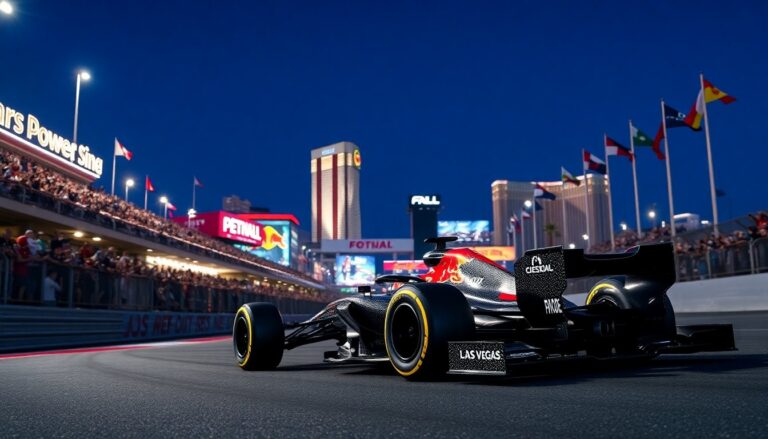Argomenti trattati
The Las Vegas Grand Prix presented a challenging day for British driver George Russell. Starting from fourth position, Russell faced a persistent steering issue that hindered his pursuit of victory. Following a post-race disqualification of rival Lando Norris, Russell ultimately secured a second-place finish.
Russell’s performance reflected both resilience and strategic adaptability. He maintained a positive outlook despite failing to replicate his previous year’s success on the demanding Las Vegas circuit. His ability to navigate the car’s limitations underscored his driving skills and highlighted the ongoing challenges faced by the Mercedes team.
Steering difficulties during the race
From the start, Russell encountered significant obstacles. He reported that the steering problem emerged around Lap 5, mirroring issues he faced during qualifying. “I had the steering problem again from about Lap 5, the same as I did in Qualifying,” he stated, expressing frustration over the need to adjust his driving style to accommodate the malfunction. Despite this discomfort, he managed to maintain a steady pace during the early stages of the race.
Adapting to the challenges
As the race unfolded, Russell’s strategy evolved when he recognized the chance to challenge for the lead. He noted, “At the start of my second stint when Max Verstappen came out of the pits, I was like ‘right, I’m going to attack now’.” However, tire degradation soon became apparent, particularly in the front-right tire, leading to a drop in performance. He communicated his concerns to his team, stating, “I don’t think I’m going to make it to the end on this tire,” but his team remained optimistic about their standing in the race.
Ultimately, the combination of tire wear and steering issues led Russell to accept that third place was the best outcome for him. “P3 was the maximum today, but other than Lap 1, it just wasn’t an enjoyable race,” he lamented, reflecting on a difficult experience.
Mercedes’ evolving performance
In contrast to the previous year, when Mercedes achieved a dominant 1-2 finish at the Las Vegas GP, Russell acknowledged a downturn in their performance. He finished over 20 seconds behind race winner Verstappen. While this gap may appear discouraging, Russell remained hopeful about the overall progress of the Mercedes team. He remarked, “I think if you just take the average of this season – if you look at Singapore last year, we were terrible and we won this year.”
A strategy for consistency
Russell highlighted a significant shift in the team’s approach, suggesting that the current car design offers improved reliability throughout the season. “We’ve got a car that is better across 24 races,” he asserted. “Last year, we had a car that was either exceptionally dominant or terrible.” This perspective indicates a strategic pivot for Mercedes, focusing on consistency rather than isolated moments of brilliance.
As the team continues to refine its vehicle, Russell emphasized the importance of accumulating points consistently throughout the season, even if it means sacrificing standout performances in individual races. “Unfortunately, we may not get as many highlights, but we get more points in a season,” he concluded, reflecting a mature understanding of long-term success in the competitive realm of Formula 1.

